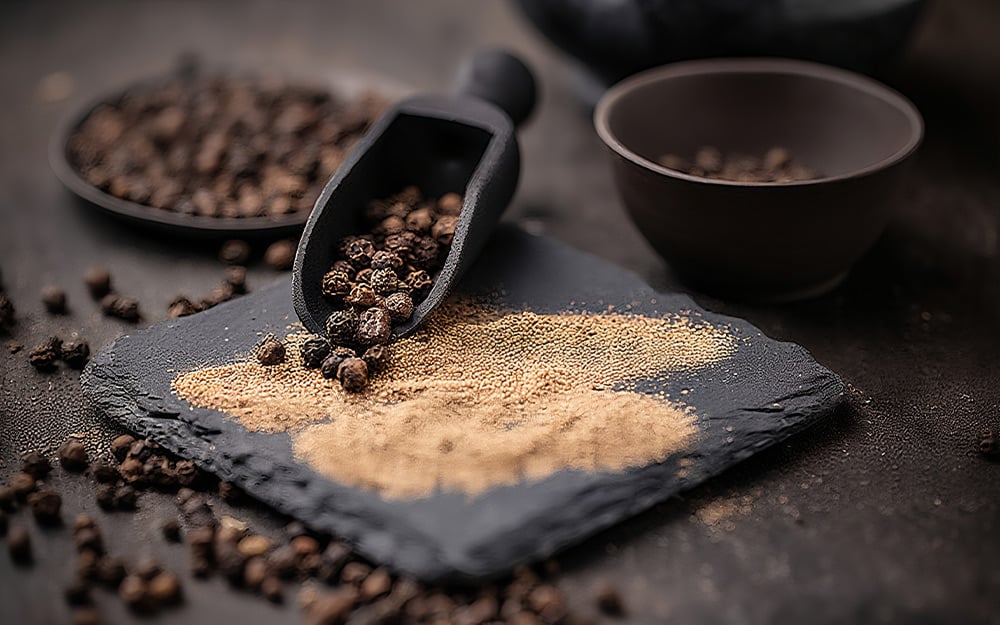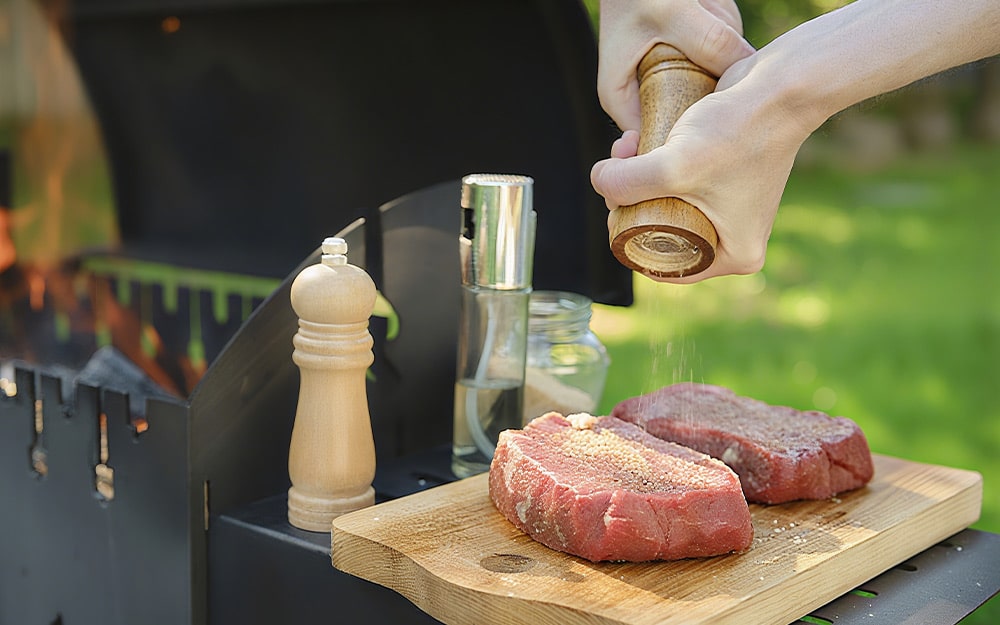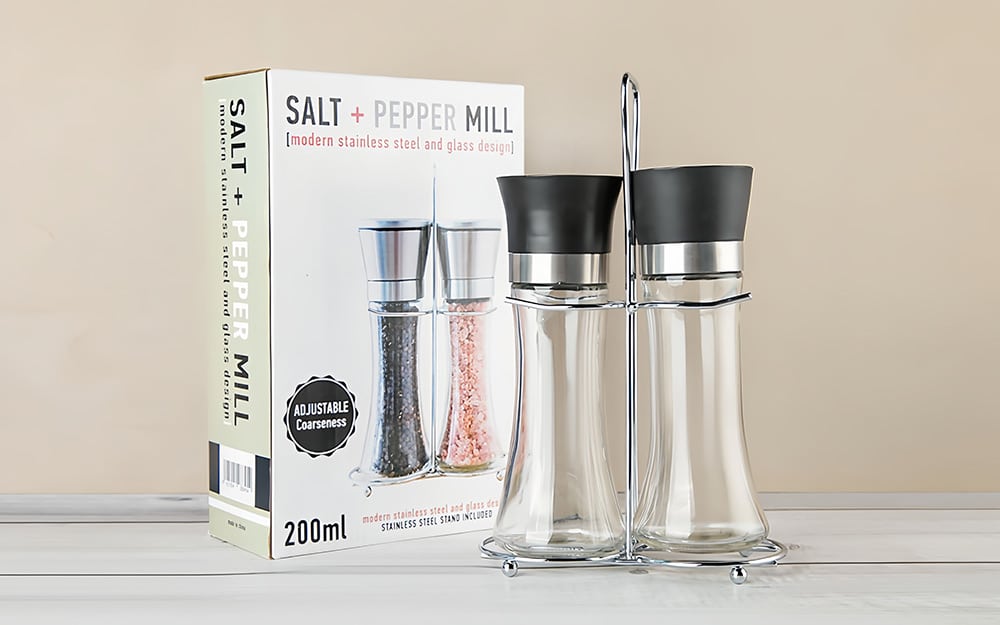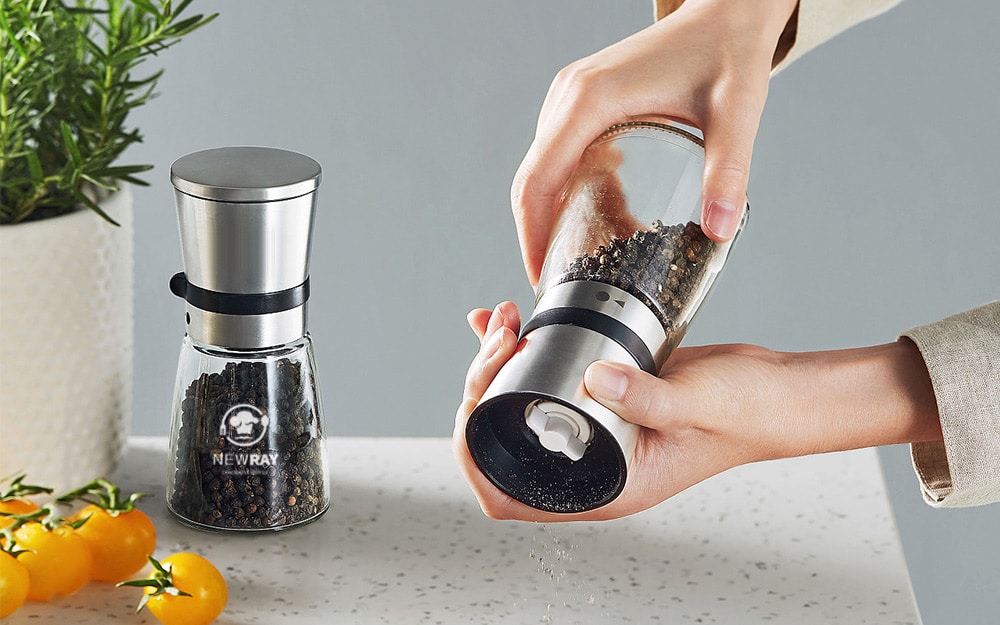Table of Contents
In the rapidly growing and fast-changing global food industry, seasonings are no longer just simple table condiments, but a core element connecting regional culture, dietary structure, and supply chain efficiency.
In 2025, the spice powder bottle industry trend is increasingly moving towards organic products, premium compound spices, and exotic flavors as the main growth engines for major brands; due to black pepper shortages and other supply issues, innovation in alternative spices and blended products is accelerating; regionally, the Asia-Pacific and Europe are the core growth areas, and brands should focus on recipe innovation, channel expansion, and certified sustainable strategies.
In addition to innovation in formulations and recipes, the packaging of spices and seasonings has become the tangible material expression of each spice brand’s flavor, design, habits, traditions, and other elements.
From the most basic preservation function, spice packaging has evolved into a key participant in product structure design, brand image building, and even consumer interaction experiences.
The design and material selection of glass spice bottles have long been a strategic part of the spice and seasoning industry.
This article will start with the origin of the pepper grinder, outline the global distribution of spice-producing regions and seasoning trends, then analyze how various spice brands choose the most suitable packaging materials based on their own interests and product characteristics, and, combined with the professional capabilities of Newray — a company deeply engaged in the glass bottle manufacturing industry for fifty years — explore the evolutionary direction of modern seasoning packaging.
Ⅰ. Starting from the Kitchen Grinder: Seasoning Packaging Is No Longer Just a Container
1. The historical status of pepper and the evolution of its usage
Pepper (Piper nigrum), native to the Malabar Coast of India, is one of the earliest spices in world history to achieve “global trade.”
In ancient Rome, it was valued equal to gold; in the Middle Ages, European nobility regarded pepper as a symbol of wealth.
For a long time, pepper was used in whole or crushed form in dishes, until the early 19th century when it experienced a critical transformation in usage.
The birth of the grinder and the revolution in packaging form
In 1830, the Peugeot brothers of France invented the world’s first manual pepper grinder with a metal gear structure.
From traditional spice powder to freshly ground whole black pepper at the table, this innovation not only greatly preserved the spice’s flavor but also redefined the way seasonings were sold: black pepper returned from powdered form to whole grain form, integrated with the grinding function in one.
Today, whether in an American home kitchen or a high-end German restaurant, freshly ground pepper has long been a basic standard.
This also created a composite packaging need — glass seasoning bottles paired with suitable grinder caps to hold granular spices.
Consumers need no extra tools; open the bottle and use it, satisfying both preservation and hygiene while enhancing the usage experience.
This type of structural packaging significantly increased the application value of glass materials, elevating them from static containers to carriers of functional components.

From this point onward, in the culinary world, “participation,” “visual experience,” and “interactive scenarios” became elements studied and innovated upon by various food industries.
Food products were no longer simple meals, but became ceremonies of sensory and emotional interaction.
For example:
Flaming cocktails: The open flame not only creates visual impact but also symbolizes “elevation,” “passion,” and “uniqueness.”
Freshly stir-fried Yangzhou fried rice: Represents “craftsmanship” and “skill,” making customers believe “this is one of a kind.”
Dry ice rose desserts: The mist and petals create a “dreamlike atmosphere,” appealing to emotions rather than just taste buds.
Since then, culinary culture has become richer and more colorful.
2. When did manual grinders become globally popular?
Popularity only in Europe was not enough.
What truly made manual grinders a global standard was the 1950s–60s.
At that time, large-scale Western restaurant chains (such as steakhouses and Italian restaurants) emerged in Europe and North America, emphasizing tableside fresh grinding of pepper.
Waiters holding a plate in one hand and twisting the grinder in the other became part of the “ritual” — a small gesture that effortlessly upgraded “service,” attracting young people and food lovers who were eager to pay for freshness and creativity.
According to Statista’s historical data on catering equipment, after 1965, demand for home and commercial grinders in the North American market expanded by about 15–20% annually.
By the 1980s, the combination of grinder caps and glass spice jars had gradually entered ordinary supermarket shelves (especially with the large-scale launches by spice giants such as McCormick and Schwartz).
The global seasoning industry’s annual output value exceeded USD 200 billion in 2023 (Mordor Intelligence).
The global spice and seasoning industry’s market size was about USD 26.88 billion in 2024 and is expected to grow to USD 28.61 billion in 2025, with a compound annual growth rate (CAGR) of about 6.5%.
By 2029, the market size will reach about USD 40.17 billion, with a CAGR of around 8.5–8.6%.
Among these, the CAGR for whole spices in glass grinder bottles remains at 4–6%, showing consumers’ deep loyalty to the idea of “freshly ground.”
3. The grinder bottle still has untapped potential — what more can be done?
Do not assume that grinder bottles are only for pepper!
Market demand is becoming increasingly segmented, with new formulas, materials, and processes emerging.
First is material upgrades — in the past, plastic grinder mechanisms dominated, but in recent years, high-end customers (in Europe, the U.S., Japan, and South Korea) prefer ceramic grinder mechanisms because they resist corrosion, can grind salt crystals, do not rust, and can last for many years.
The global annual demand growth for ceramic grinder mechanisms is 8–10%, far higher than the 3–5% growth rate for plastic grinder mechanisms (2024 Global Kitchenware Report).
Next is refillable and eco-friendly trends — more brands are launching “refillable jars,” meaning glass spice bottles with detachable grinder heads.
Consumers buy the glass container once and later purchase loose pepper, rock salt, or dried herbs to refill.
European supermarket private labels took the lead — by 2024, Tesco and Aldi’s private-label seasoning lines had over 40% of their products in the “refillable + grinder head” format, doubling since 2018.
And it’s not stopping there — smart features are emerging.
High-end brands and diversified product lines are focusing on value-added services and premium product development.
From Switzerland’s DKB to Germany’s Zassenhaus, and some Asian OEM factories, many are developing and testing electric versions and small USB-rechargeable grinders.
Compared with manual types, electric grinders are more modern.
Although the cost is higher, in today’s age of smart product adoption, more young consumers are willing to pay for them — which will inevitably lead to more new gift-set products targeting the high-end market and feeding back into brand value.
Who says grinders must be manual? As long as customers are willing to pay, there is always room for new ideas.

Ⅱ. Major and Emerging Markets for Seasonings
In the spice and seasoning industry, traditional markets in Europe and North America remain the foundation.
Combined, North America and Western Europe account for nearly 70% of the global spice grinder bottle market (Statista, 2024).
In Germany, the UK, and the U.S., annual per capita spice consumption is between 2.5–3.2 kg, higher than the global average of 1.8 kg.
Customers in Europe and North America value the “kitchen experience,” can afford premium products, and are willing to pay for “freshly ground” — they have high average order values and customization demands, making them worth long-term investment by spice brands.
Differentiated design, a focus on the user experience, and eco-friendly glass packaging solutions are the key selling points in these markets.
If your company is looking for new products or growth opportunities, consider multi-spice gift sets or reusable spice bottles paired with electric grinders.
Highlighting the rarity of the spices while incorporating eco-friendly concepts can also address the “gift-giving dilemma,” add social attributes, and be easily promoted through online communities — achieving multiple benefits at once.
Emerging Markets: Who’s Growing the Fastest?
Southeast Asia, the Middle East, and South America are the hotspots.
In particular, Southeast Asia — Indonesia, Malaysia, and Thailand — has a large population base, heavy reliance on spices, and an expanding chain restaurant sector, driving a surge in demand for commercial grinder bottles.
Indonesia’s annual imports of dried pepper exceed 70,000 tons (FAO, 2023), making it the world’s second-largest exporter of pepper.
Compared to Europe and North America, these markets lag by at least ten years; manual grinder bottles that became popular in Western countries decades ago are only now gaining traction here.
Currently, there is severe homogeneity in packaging — most big brands have been using very similar glass bottle shapes, with little difference in grinder design.
If your spice brand wants to stand out locally, consider differentiated bottle shapes.
Of course, developing a new custom glass bottle mold involves design fees, mold costs, and prototyping costs, and a new grinder mold is also a significant investment.
If initial sales forecasts are uncertain, it is recommended to focus creative efforts on labels, outer packaging, and pairing strategies rather than committing to new molds immediately.
Further west, in the Middle East (UAE, Saudi Arabia), the density of high-end Western restaurants has increased significantly in recent years.
Locals pursue a sense of dining ceremony, and table setups are changing in style.
Exports of ceramic-core grinder bottles from 2018 to 2023 grew by about 52% (UN Comtrade data), and the market’s potential is far from fully tapped.
If you plan to enter the Middle Eastern spice trade, this could be a starting point.
Industry insiders know that even a small bottle cap involves supply chains, design, functional upgrades, and food safety regulations.
It’s not something everyone can do well, nor is it a business that ends with just one order.
For spice producers or brands seeking to enter or deepen their presence in this field, procurement teams must focus on two keywords — differentiation and supply chain flexibility.
What does the market want?
Good-looking, grinds well, no residue, eco-friendly, reusable, and reasonably priced — none of these can be skipped.
If your spice product is strong in content and supported by a reliable glass jar supply chain plus creative design, your brand can thrive in customization and scenario-based marketing: hotel custom editions, restaurant logo embossing, holiday limited editions.
Even with just a glass bottle and a ceramic cap, you can tell a brand story.
That twist — it’s not just sprinkling pepper, it’s sprinkling revenue, brand reputation, and customer loyalty.

Sales Tip
Ceramic cores’ biggest selling points: premium image, durability, and reusability — high unit price but improves brand image, especially popular with gift box retail, hotel chains, and online premium spice sellers.
Plastic cores: economical, effective, ideal for mass volume and bulk packaging, suitable for large supermarkets and private-label fast-moving consumer goods.
Don’t underestimate them — they still account for about 70% of global annual shipment volume.
Ⅲ: How to Choose the Right Supplier For seasoning packaging?
If you are sourcing glass seasoning jars or packaging for your spice brand, consider these factors:
Grinding Performance
Buyers often ask: “Can your grinder handle salt? Will it jam?”
Plastic cores are mostly used for black pepper and small-particle spices, with fixed grind size and no adjustment.
Ceramic cores, in contrast, resist salt corrosion and never rust.
Some designs feature adjustable knobs for coarseness control, which consumers love.
Appearance & Packaging
Grinder caps can differ not only in color and mechanism but also in surface finishing — glossy or matte.
For stainless steel grinder caps, manufacturers can print or laser engrave your logo to enhance branding.
The glass bottle holding the spice offers even more potential — from embossed designs in the mold to adhesive labels, silk-screen logos, baked-on decals, heat transfer prints, and hot stamping, all boosting brand identity.
Due to plastic reduction regulations, many brands in Europe and the U.S. are moving toward label-free designs — instead of bottling plain jars and adding adhesive labels, they engrave the logo directly into the glass, add branding or website details on the base, and eliminate or minimize paper labels.
This reduces packaging costs, complies with regional packaging restrictions, and strengthens sustainable brand messaging.
For packaging formats, consider gift sets, single-jar packs, twin packs, multi-spice gift boxes, and high-end color box sets — tailored to different channels’ needs.

Functional and Material Details
Not all grinder cores are equal in hardness — higher grades grind better and last longer.
Some ceramic cores (85 porcelain) are less wear-resistant than higher-grade 95 porcelain.
The central shaft material also matters — aluminum alloy or stainless steel 304.
It’s well known that 304 stainless steel is more durable and harder.
Most grinders include dust covers.
If your grinder caps are assembled by automatic capping machines, ensure your supplier adjusts dust cover tightness to prevent them from falling off during assembly.
Jar capacities vary — common sizes include 80ml, 100ml, 120ml, 150ml, and 200ml — with preferences differing by country.
Certification & Compliance
Since spices are part of the food industry, their packaging — including glass bottles and plastic grinder mechanisms — must meet food-contact material safety regulations.
Key compliance points:
Focus | Description |
Food Contact Materials (FCM) Safety | Packaging must not release harmful substances or affect food composition, odor, or taste. |
Traceability | Ability to trace packaging material sources and supply chain. |
Heavy Metal-Free & Non-Toxic | Must comply with limits for lead, cadmium, mercury, arsenic, etc. |
Migration Test Report | Third-party testing to confirm no harmful migration from packaging to food. |
Procurement checklist:
- Declaration of Food Contact Compliance (DoC)
- Material certificates (e.g., MSDS for plastics, glass type specifications)
- Migration test reports (total and specific migration)
- BPA-Free / Phthalate-Free statements
- REACH / RoHS (recommended for EU exports)
- FDA 21 CFR compliance (for U.S. exports)
Supply Chain Service
Choose suppliers based on:
- Small-batch customization and sampling lead time
- Logo customization options
- Export packaging suitability and carton durability
- Pallet standards (EU, U.S., international) and safe stacking
- One-stop service (heat seal liners, shrink sleeves, labels, door-to-door delivery)
- Lightweighting capabilities (reduce glass weight by 15–20% for cost competitiveness)

Ⅳ. Newray: Creating Truly “Matched Value” Glass Packaging Solutions for Seasonings
As global seasoning packaging shifts toward multifunctionality, high differentiation, and green circularity, the role of packaging suppliers is changing — no longer just glass jar providers, but co-creators of product and brand upgrades.
Newray, with 50 years of glass manufacturing expertise, specializes in serving high-value sectors such as seasonings, spices, and sauces, offering:
Custom glass bottles and grinder caps — from whole-spice grinder jars to multifunctional condiment bottles, supporting bespoke mold development.
Composite cap solutions — PC/ABS grinder caps, PP shaker caps, butterfly shaker caps, composite moisture-proof inner caps; plus accessories like heat seal liners, pressure-sensitive seals, shrink sleeves.
Food-grade production certifications — ISO 9001 / SGS / FDA compliance, full inspection reports, third-party inspection support; handling orders in the millions with worry-free shipping and after-sales, exporting to 120+ countries.
Professional design team — CAD drawings in 72 hours, 100% sample success rate, fast response, integrated delivery systems, and visual traceability.
Visit our website to explore our full range of glass grinder bottles and shaker jar solutions.
https://www.newraybottles.com/spice-herbs/glass-spice-jar-sprinkler-shaker/
Ⅴ. Conclusion: Packaging Is Not only an Accessory — It’s Part of a Seasoning’s Value
From the evolution of pepper grinders to the logistical challenges of spice origins; from market flavor preferences to the structural innovations in packaging — we see that packaging has shifted from being a passive carrier to an active builder of value and experience.
It not only protects the contents but also conveys trust, usage efficiency, consumer philosophy, and brand identity.
Newray will continue collaborating with global spice and seasoning brands to develop the next generation of glass seasoning packaging systems, balancing precise positioning, user experience, and sustainable practice.
If you are developing a new seasoning product or planning to upgrade existing packaging, contact us anytime. Let packaging elevate your product. Let Newray glass speak your brand’s value.

